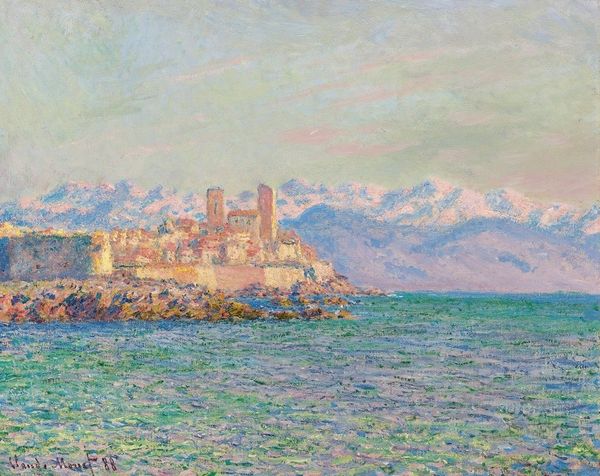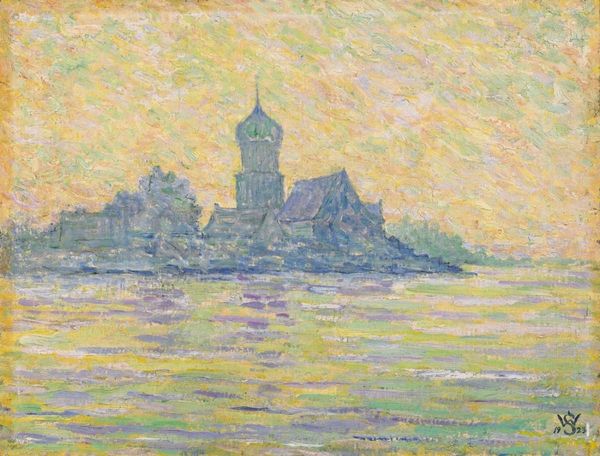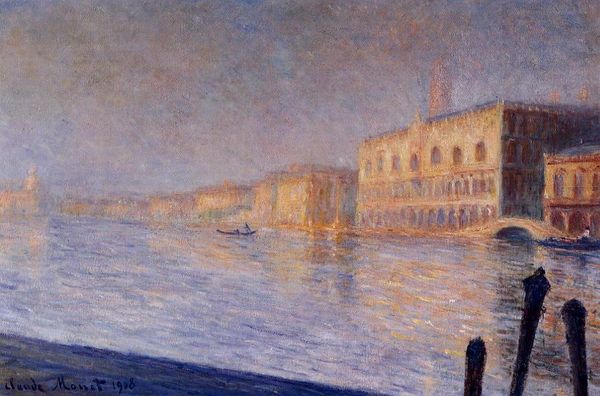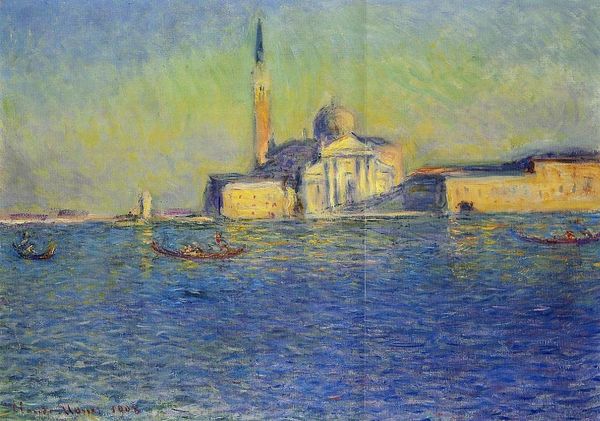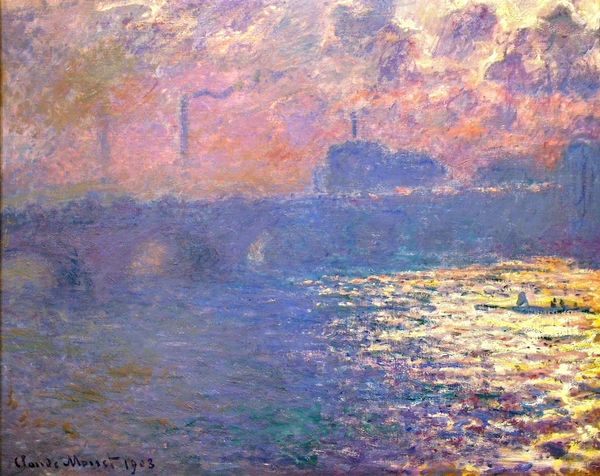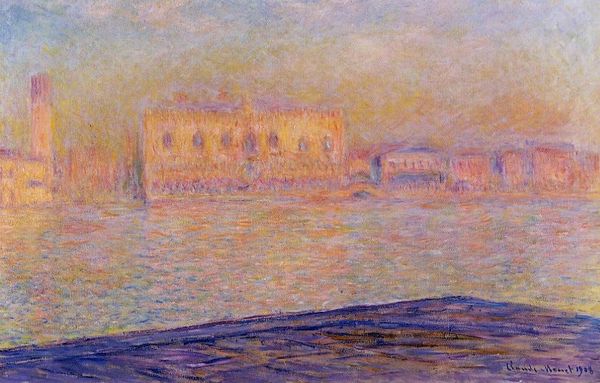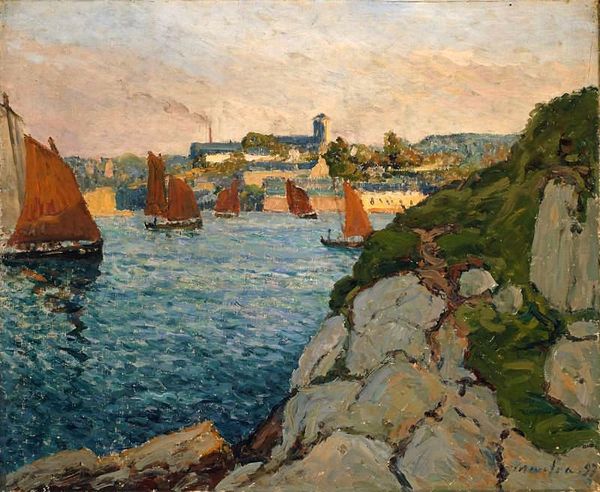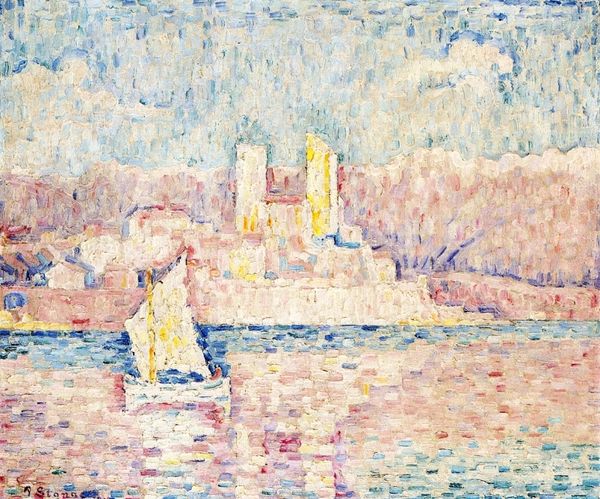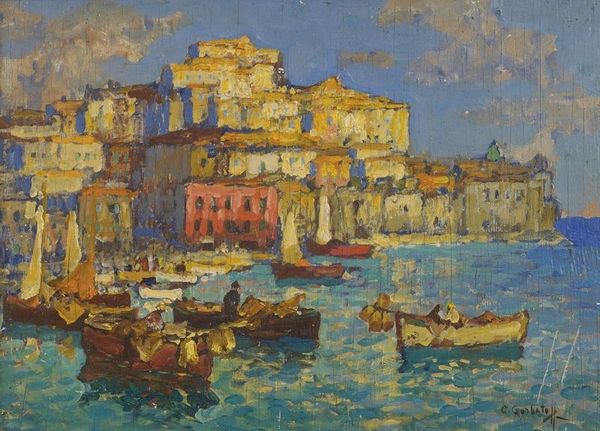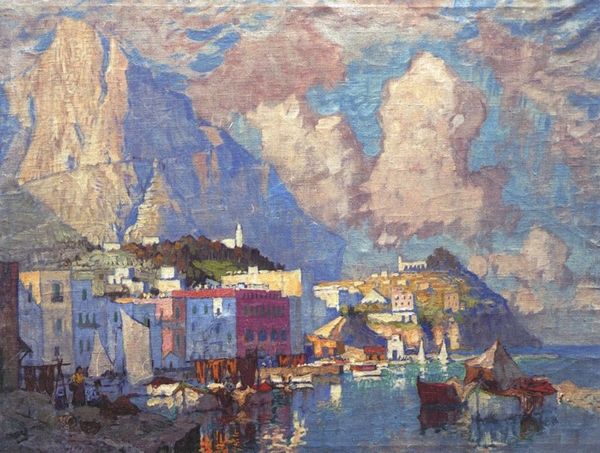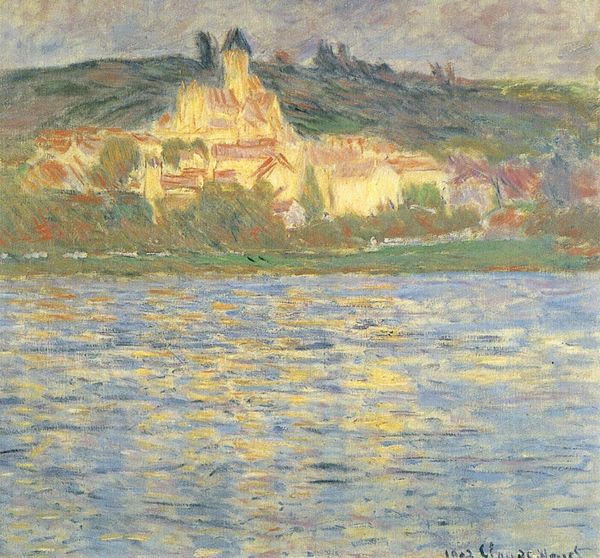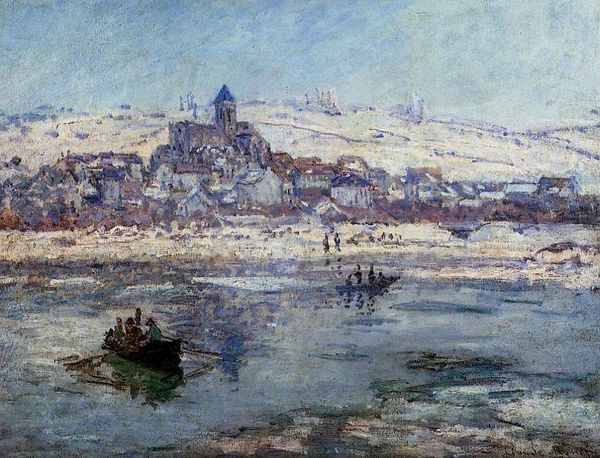
painting, plein-air, oil-paint, impasto
#
sky
#
painting
#
impressionism
#
impressionist painting style
#
plein-air
#
oil-paint
#
landscape
#
impressionist landscape
#
oil painting
#
impasto
#
geometric
#
seascape
#
cityscape
Copyright: Public domain
Editor: So, here we have Monet's "The Bay of Antibes," painted in 1888, in oil on canvas. It has a dreamlike quality. How should we think about this piece? Curator: Look closely at Monet’s brushwork and impasto technique here. The thick application of paint isn’t just about rendering light and atmosphere; it’s about the labor involved, the physical act of applying pigment to the canvas. Think about the societal context of Impressionism – it broke from academic traditions that valorized smooth surfaces and invisible brushstrokes. What do you make of this direct expression of materiality? Editor: That’s interesting. I guess I hadn't considered it that way. I was more focused on the beautiful colors and the overall mood, the atmospheric perspective...the sheer aesthetic beauty, which seems the complete opposite. Curator: Precisely. But we shouldn’t separate aesthetics from the conditions of its production. Oil paint itself was becoming more readily available in tubes at this time. Monet wasn’t grinding his own pigments! How does this change our view of "The Bay of Antibes" knowing he paints en plein air with ready made supplies, and is therefore portable and convenient to execute art as craft on site? Is this "high art" when considering the process alone? Editor: I see your point. It makes me think about accessibility. Were new audiences, in addition to new artists, a part of this shift toward a craft and material driven expression? Curator: Absolutely. The rise of the middle class, industrialization, it all contributes. The painting then becomes not just a representation, but also a product tied to these changing social structures. So, by exploring the 'how,' we expose what making the art is about during Monet's time. Editor: Wow, I'll never see an Impressionist landscape the same way again! Curator: Exactly. Considering the materials and context opens up fascinating layers of meaning within the aesthetic experience.
Comments
No comments
Be the first to comment and join the conversation on the ultimate creative platform.

